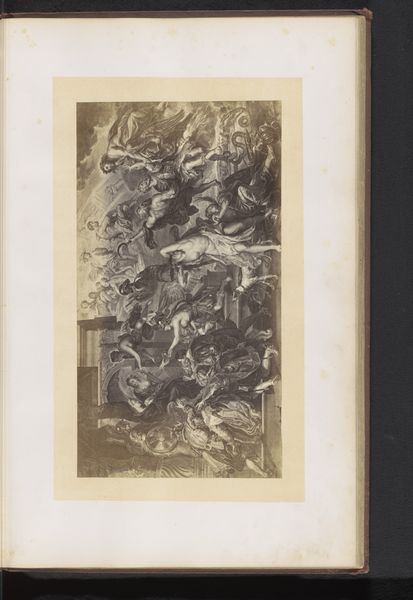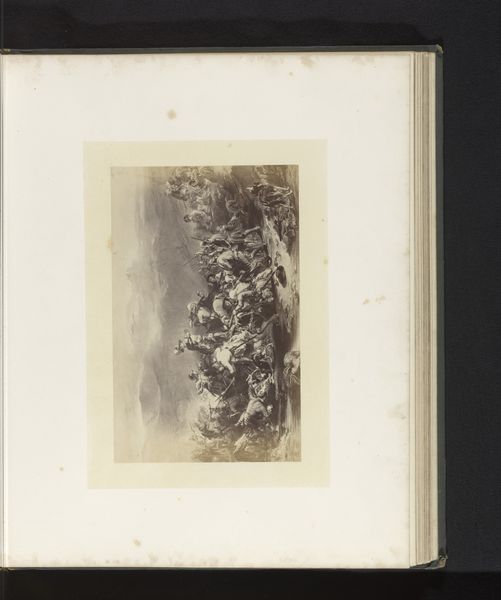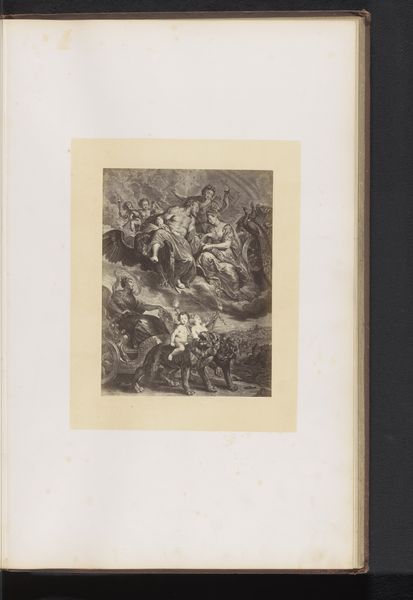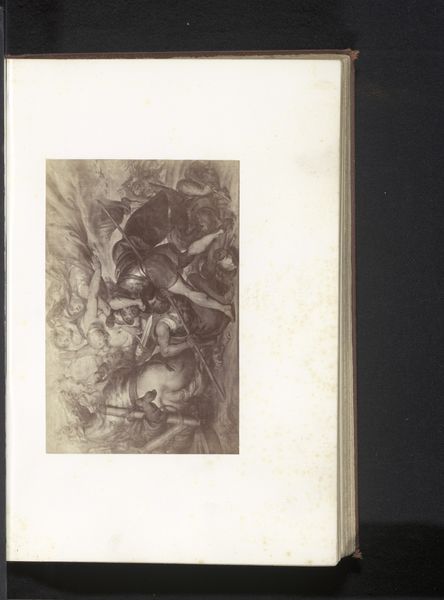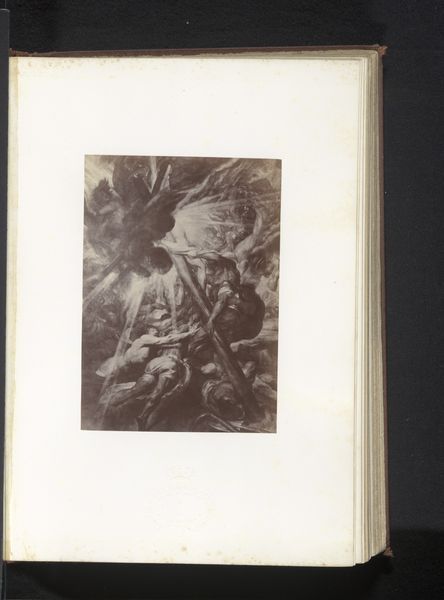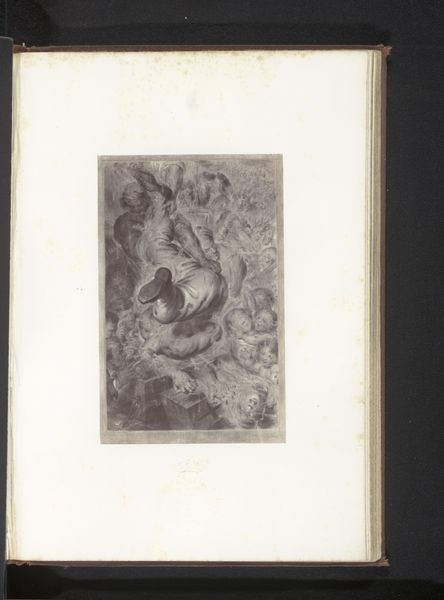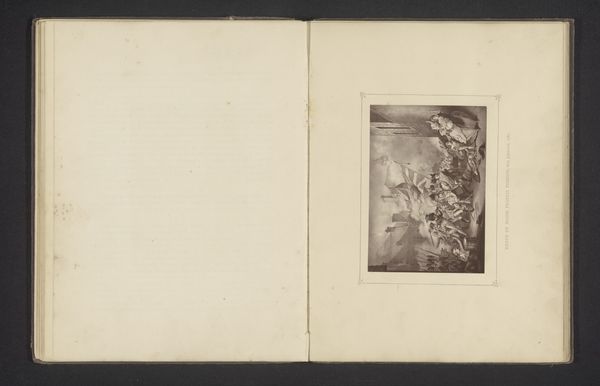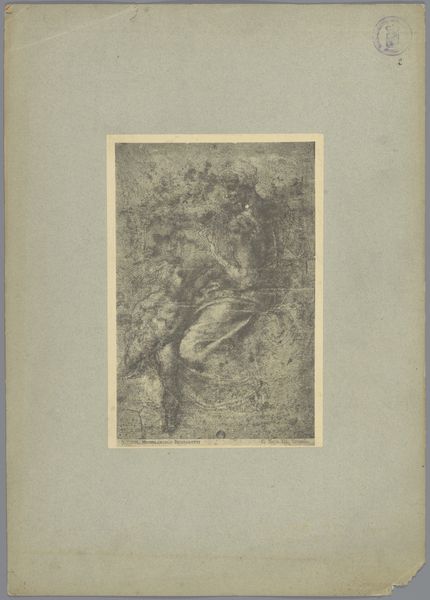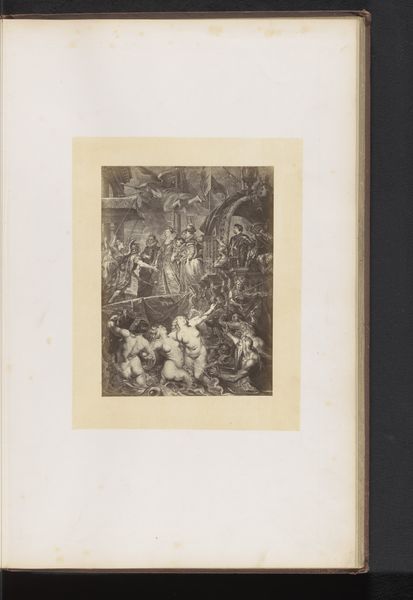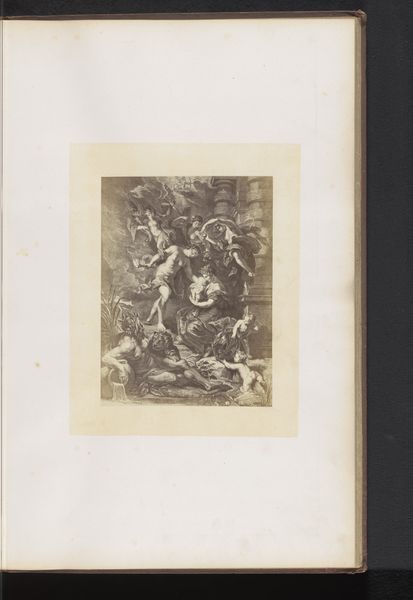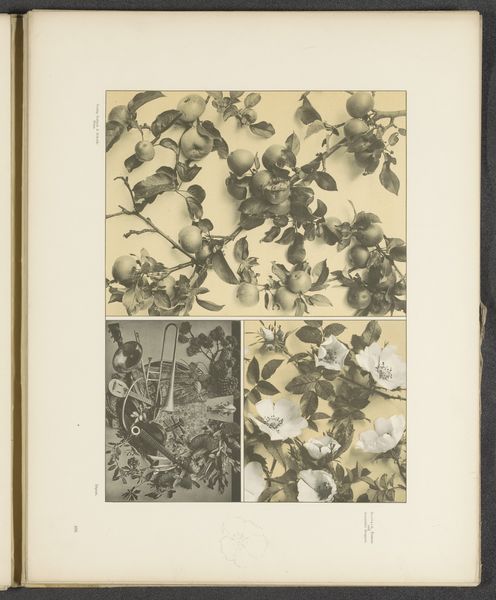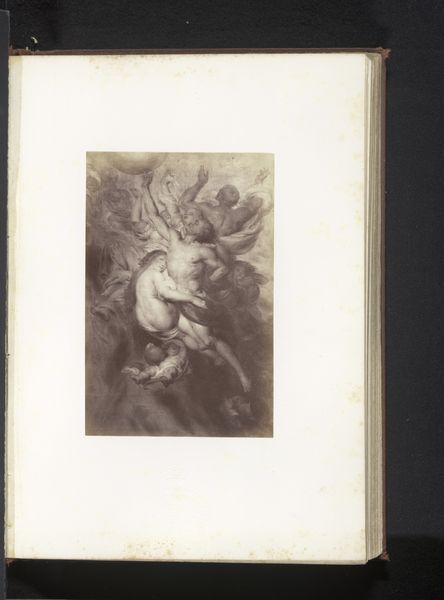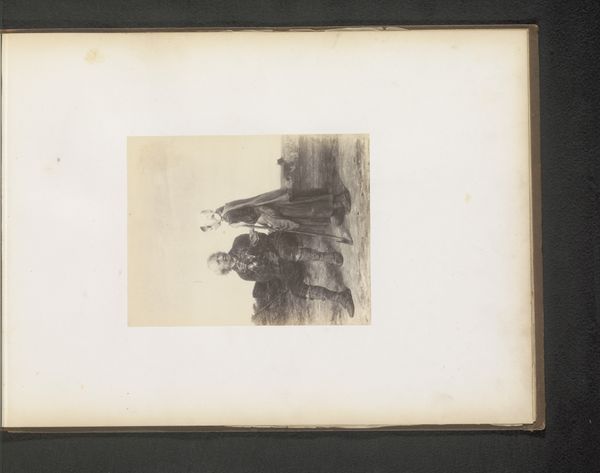
Fotoreproductie van een gravure van De regering van Maria de'Medici door Jean-Marc Nattier, naar het schilderij door Peter Paul Rubens before 1864
0:00
0:00
Dimensions: height 186 mm, width 347 mm
Copyright: Rijks Museum: Open Domain
Curator: This image captures "The Government of Maria de'Medici," a photo reproduction of an engraving by Dechamps et Cie., after Jean-Marc Nattier, itself a copy of a painting by Peter Paul Rubens, likely created before 1864. It's currently housed here at the Rijksmuseum. Editor: Immediately, the swirling composition strikes me. A mass of figures, rendered in monochrome tones, appears caught in a kind of chaotic ascension or descent. There’s a powerful, almost overwhelming energy to it. Curator: Absolutely, the dynamism is key. The original Rubens painting was part of a series commissioned to glorify Maria de' Medici’s life, celebrating her reign and legacy. Engravings like this, and later photo reproductions, allowed wider audiences to access these potent visual narratives. Editor: So, even in reproduction, the intention remains: the creation and distribution of a certain… image, in every sense. We see classical allegorical figures mixed with representations of power, carefully staged to construct a particular history. Curator: Precisely. Rubens masterfully used allegory to elevate Maria's status, associating her reign with divine favor and prosperity. These figures, those idealized bodies, those celestial beings, reinforce the symbolism of her divinely ordained right to rule. This photographic print continues that tradition. Editor: Though separated by time, the layered reproduction--photography referencing engraving referencing painting—highlights a recurring pattern: the use of art as a tool of power. The softened tones of the aged paper almost veil that, soften its sharpest edges. Curator: Yes, but perhaps soften too the reach of its visual vocabulary. Consider how the very choice to reproduce this work—to translate it through engraving and photography—democratized its message to new viewers, shifting its meaning once again in the historical conversation. What new dialogues might it be involved in today? Editor: What I see clearly is how potent an image can remain, even after layers of mediation, reminding us to critically engage with how history is visually constructed, disseminated, and ultimately consumed. Curator: Indeed, thinking about this print’s journey through various media helps us understand the enduring power and malleability of visual symbols across generations.
Comments
No comments
Be the first to comment and join the conversation on the ultimate creative platform.
